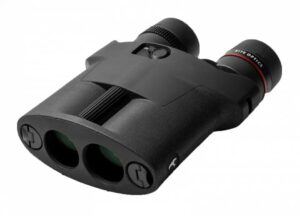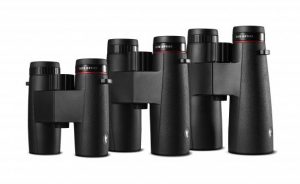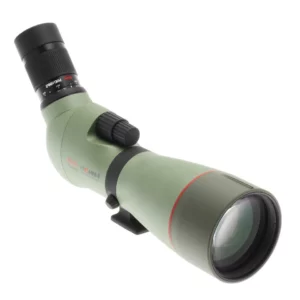The UK coast is home to many different bird species, which play a key role in the coastal ecosystems. They depend, directly and indirectly, on the marine and coastal environment. Seabirds are often used as bioindicators of marine ecosystems as they are easy to detect and survey, and are top predators; their presence and abundance can indicate the health and status of the habitat and food chain.
This guide contains some key identification features to look out for while out birdwatching by the coast. It is possible to see birds along our coastline throughout the year, but in late spring and early summer, particularly around June, many seabird species are feeding chicks. This is, therefore, the best time of year to spot some of our iconic coastal birds.
Very little equipment is needed for birdwatching, but it is generally recommended to bring a pair of binoculars or a scope, as this helps to see the less obvious features that aid in identifying species. These also allow you to observe without getting too close and disturbing the wildlife. A pen and notebook to keep a record of the species you spot is also a good idea, along with a field guide for the species not mentioned on this list.
Herring gull (Larus argentatus)
Size: length (L): 54-60 cm, wingspan (WS): 123-148cm
A widespread and common (though declining) gull species across the UK. They are large white birds with grey back and wings (tipped with black), a yellow bill and pink legs, and can be seen far inland in almost any habitat from the coast to farmland, moorland, town and city. This highly versatile species is our archetypal ‘seagull’.
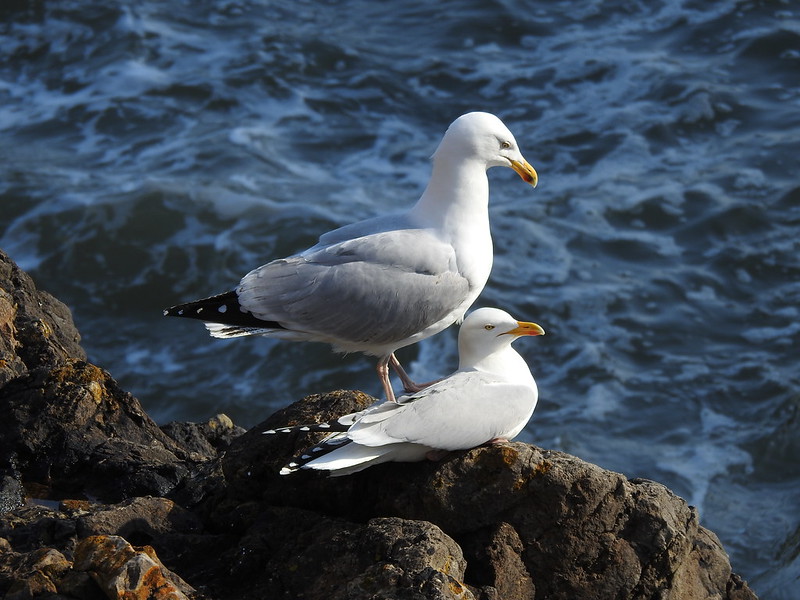
Lesser black-backed gull (Larus fuscus)
Size: L: 48-56cm, WS: 117-134cm
Slightly smaller than the herring gull with darker slate-grey back and wings. Look out for yellow legs which are a key identifier of this species. Favours rocky coasts but is also found inland in mixed flocks with other gulls and around inland lakes.
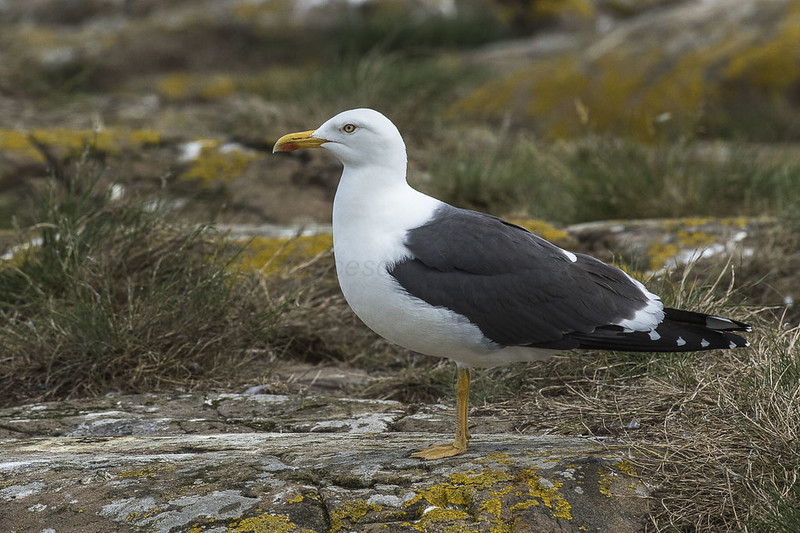
Great black-backed gull (Larus Marinus)
Size: L: 61-74cm, WS: 144-166cm
These are very large and stocky gulls with a dark grey back and wings, a thick-set yellow bill and pink legs. This species are far more prominent along coastal areas and nest largely on rocky islands.
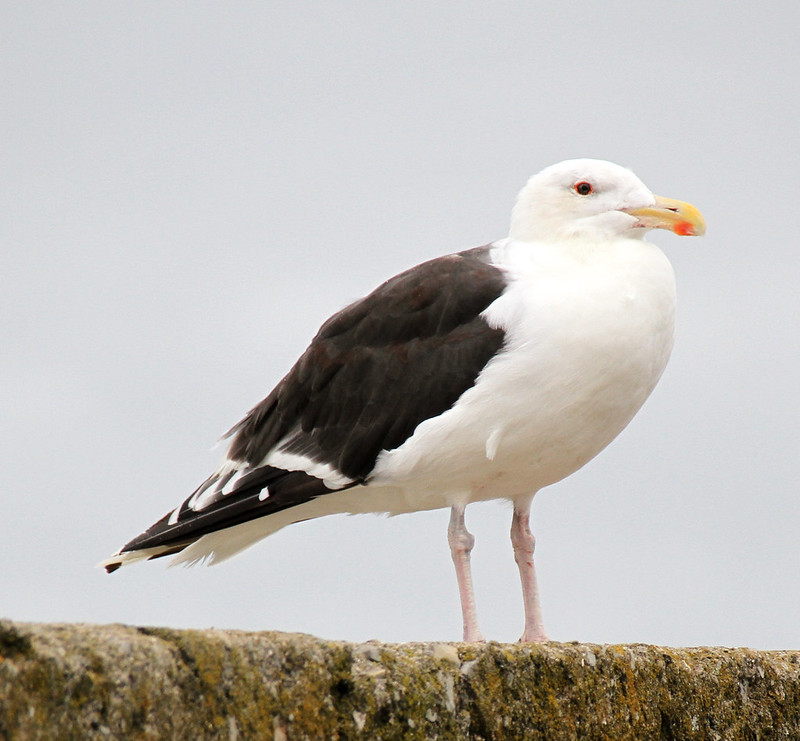
Black-headed gull (Chroicocephalus ridibundus)
Size: L: 35-39cm, WS: 86-99cm
Another widespread and common species often found inland, black-headed gulls have white heads for most of the year, often with a prominent black ear spot. In the summer, adult birds heads turns a dark chocolaty brown. They also have a red bill and red legs.
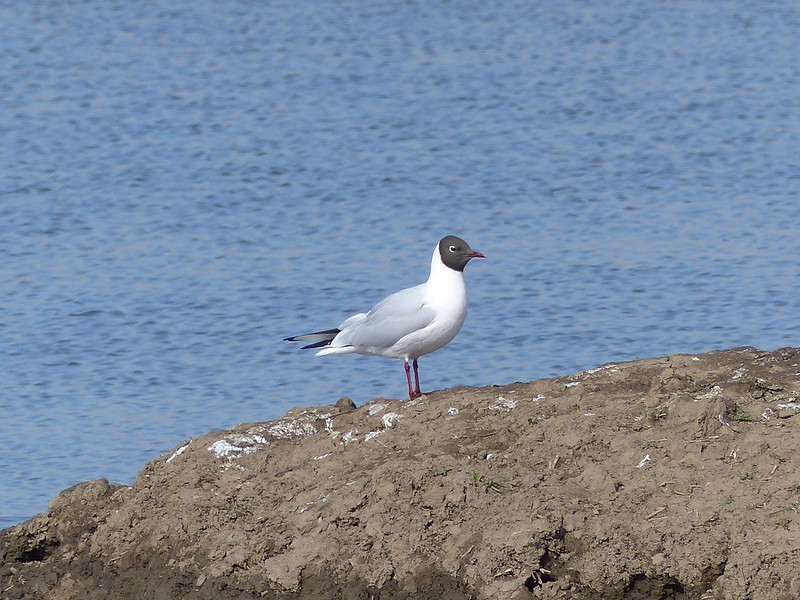
Kittiwake (Rissa tridactyla)
Size: L: 37-42cm, WS: 93-105 cm
A somewhat slight looking gull, white bodied with pale grey back and wings and black wing tips. They have a small yellow bill, dark eyes and black legs. Predominantly a summer breeding species in the UK and very rarely seen away from the coast, though they are known to form colonies within urban areas near ports.
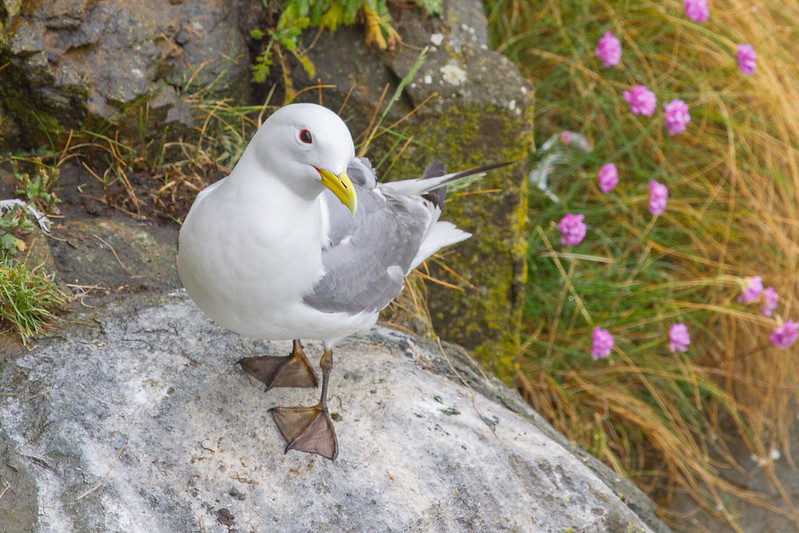
Common tern (Sterna hirundo)
Size: L: 34-37cm, WS: 70-80 cm
Slight, slender and angular birds, often breeding in colonies around coastal lakes and lagoons, common terns are bright white with a light grey back and wings, a deeply forked tail, black cap and red legs and bill. Their bill has a black tip.
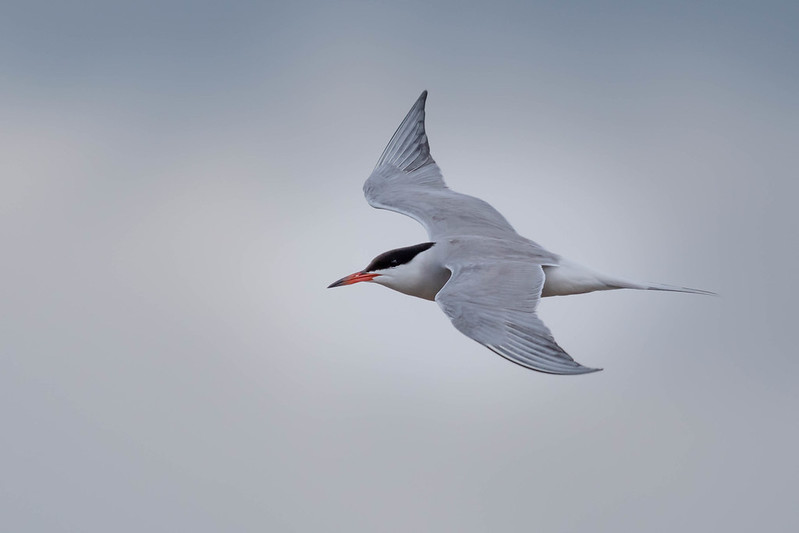
Arctic tern (Sterna paradisaea)
Size: L:33-39cm, WS: 66-77 cm
For much of the UK Arctic terns will be spotted on passage during their incredibly long migration. They are superficially similar to common tern though their bill is usually plain red with no black tip.
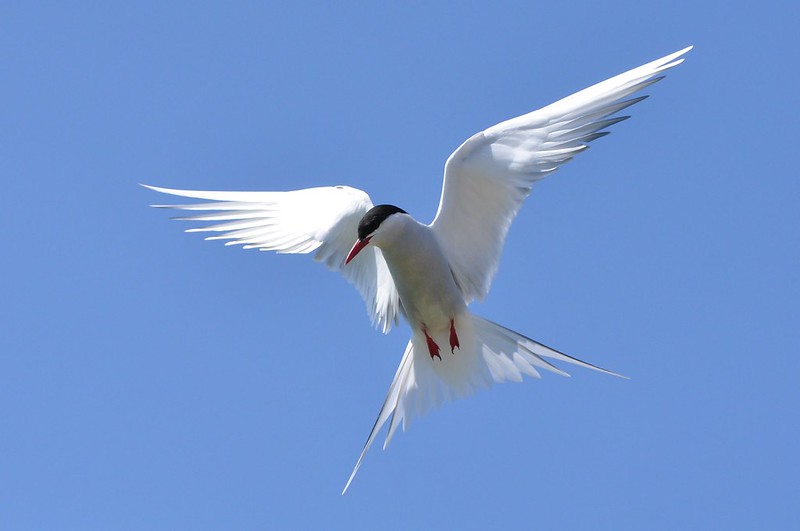
Fulmar (Fulmarus glacialis)
Size: L: 43-52cm, WS: 101-117 cm
Fulmar, though gull like in appearance, are petrels, related to albatrosses and shearwaters. They have a thick-set ‘tube-nose’ bill which they can spit foul-smelling oil from to deter predators from their nesting sites. They nest on sheer cliff faces and fly on stiff and shallow wing beats.
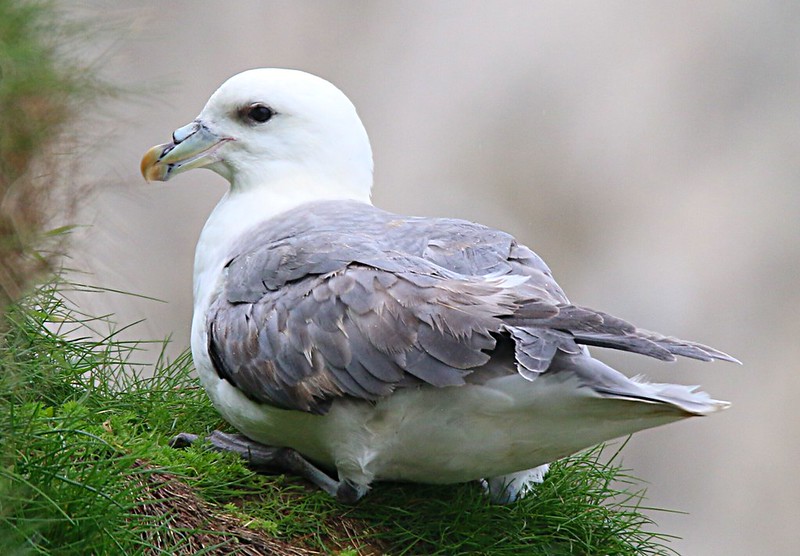
Gannet (Morus bassanus)
Size: L: 85-97cm, WS: 170-192 cm
Gannets are large white seabirds with a distinctive yellow head and long pointed wings with black tips. They also have a long pointed grey bill and white pointed tale. They can be seen flying high over the sea and circling before plunging at great speeds into the water in pursuit of food.
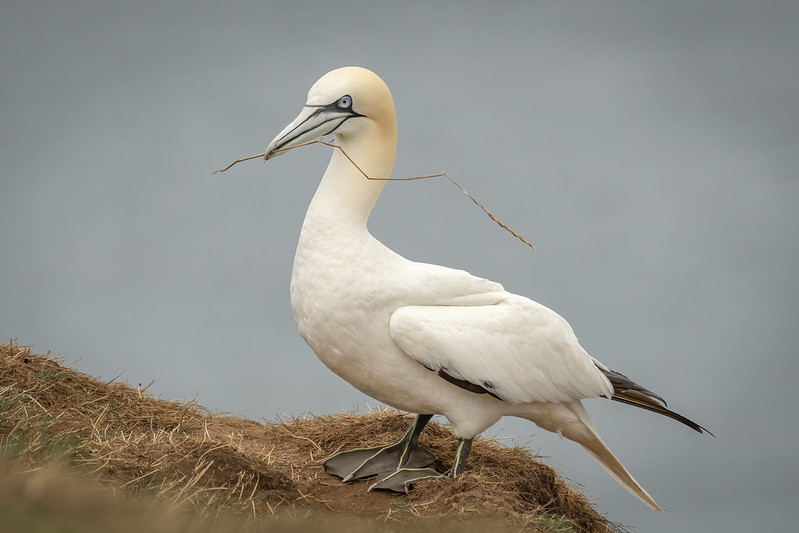
Guillemot (Uria aalge)
Size: L: 38-46cm, WS: 61-73 cm
Guillemots come to land only in the summer to breed and do so in large colonies on sheer cliff faces. Adult birds can often be seen ‘rafting’ at sea below the colony also. They have a brown/black head, back, wings and tail and white underneath. There is also a ‘bridled’ form where the birds have a white ring around their eye with a stripe behind it.
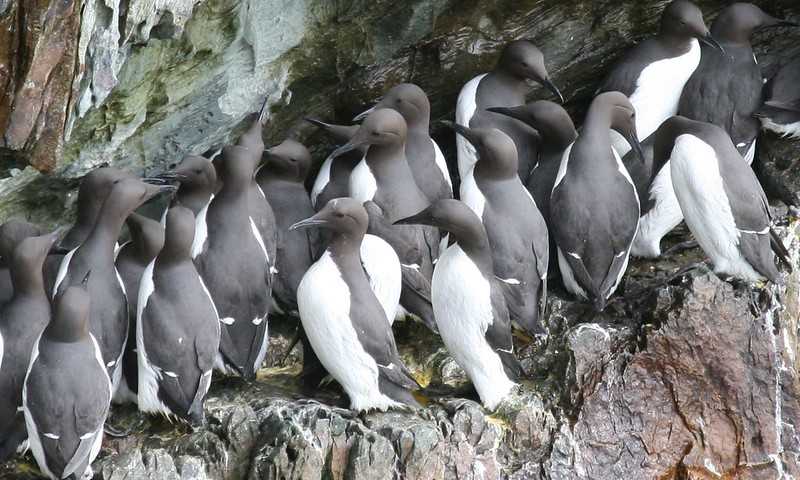
Razorbill (Alca torda)
Size: L: 38-43cm, WS: 60-69 cm
Razorbills are superficially similar to guillemot: black on their wings, back, head and tail and white underneath. An easy distinction between the species can be made however, by the razorbills deep thick-set blunt bill, where the guillemot has a longer slim bill. They are another summer breeder, wintering in the northern Atlantic, and favouring sheer rocky cliffs and islands for nesting.
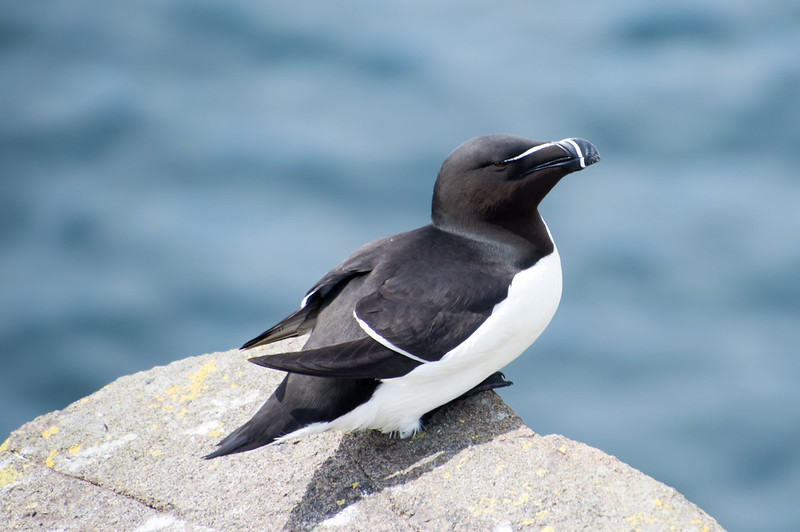
Puffin (Fratercula arctica)
Size: L: 28-34cm, WS: 50-60 cm
Unmistakeable small seabirds with a black back and white underneath. They have a white face with dark eyes set in dark triangular markings and an iconic vibrantly colourful bill. They are a summer visitor predominantly in large nesting colonies on islands, where they nest in burrows along vast grassy banks.
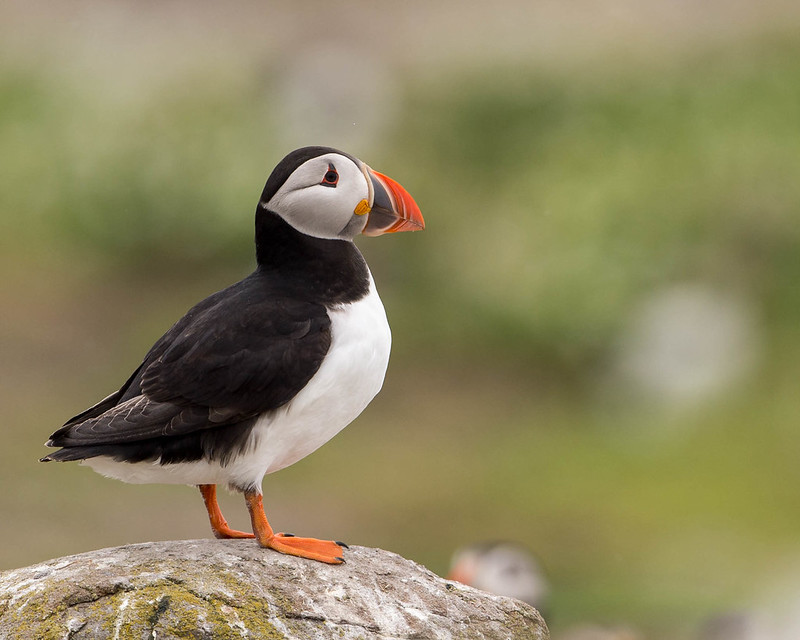
Cormorant (Phalacrocorax carbo)
Size: L: 77-94cm, WS: 121-149 cm
A large long-necked black bird, with a white face and yellow and grey bill. Cormorants are often seen inland on rivers and lakes, and in harbours where they extensively dive for their food and then stand to dry with their wings characteristically spread wide.
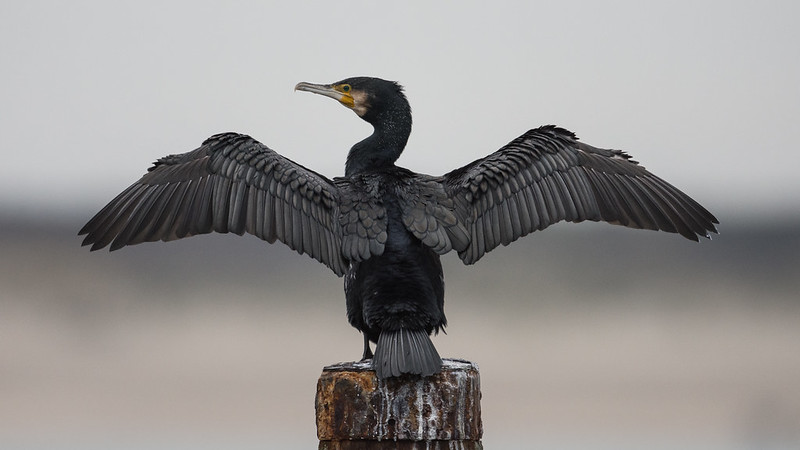
Shag (Phalacrocorax aristotelis)
Size: L: 68-78cm, WS: 95-110 cm
Shags are similar in appearance to cormorants though smaller, with a slimmer bill. Adult birds are entirely black (lacking the white face of cormorants) though still they have a yellow and grey bill. Shags are more strictly coastal and seldom seen inland, they also have a distinctive black crest on the top of their head.
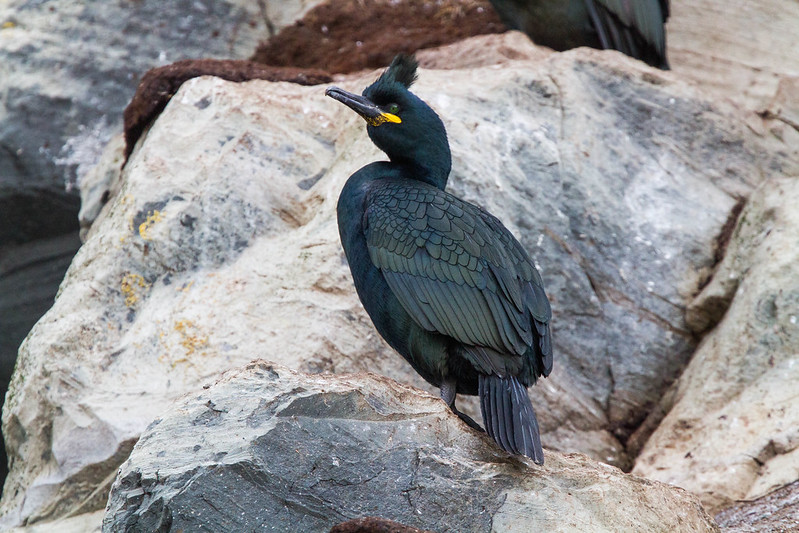
Rock pipit (Anthus petrosus)
Size: L: 15.5-17cm
Synonymous with the coast, these small, streaked brown/grey birds (with pale underside) are commonly seen flitting from rock to rock with a swift undulating flight. They have a light peeping call and can be seen perching around harbour walls -they are often quite plucky and approachable.
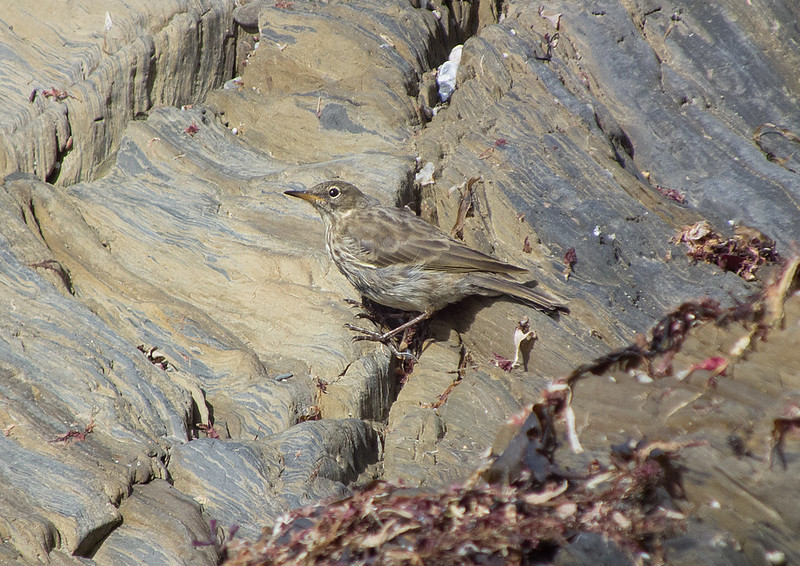
Useful books and equipment:
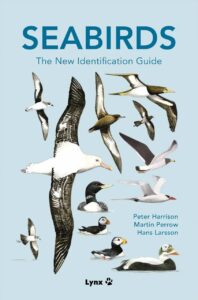 Seabirds: The New Identification Guide
Seabirds: The New Identification Guide
Hardback | June 2021
Lavishly illustrated with 239 full-colour plates, this is the first comprehensive guide since Harrison’s 1983 opus, covering all known seabirds, beginning with seaducks and grebes and ending with cormorants and pelicans.
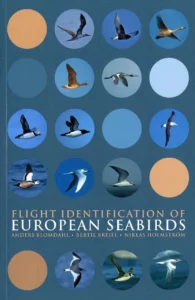 Flight Identification of European Seabirds
Flight Identification of European Seabirds
Paperback | July 2007
Containing over 650 colour photographs showing every seabird species likely to be encountered in European waters, this is an essential field guide for seawatching. Key features of each species are depicted in typical field conditions, with particular attention paid to shape and flight action, as well as plumage.
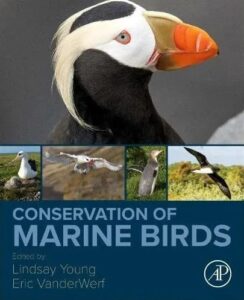 Conservation of Marine Birds
Conservation of Marine Birds
Paperback | July 2022
This is the first book to outline and synthesize the myriad of threats faced by one of the most imperilled groups of birds on earth. With more than half of all 346 seabirds worldwide experiencing population declines, this book will be an important resource for researchers and conservationists, as well as ecologists and students.
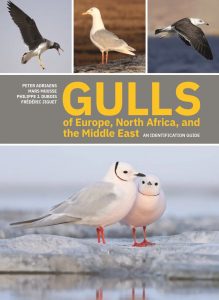 Gulls of Europe, North Africa, and the Middle East: An Identification Guide
Gulls of Europe, North Africa, and the Middle East: An Identification Guide
Paperback | December 2021
This title offers the most up-to-date guide for gull identification in Europe and beyond. Using a direct and visual approach, this guide provides accounts of the 45 species of gulls found int he Western Palearctic, extensively represented in nearly 1,400 colour photographs.
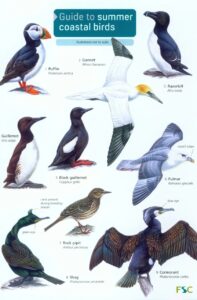 Guide to Summer Coastal Birds
Guide to Summer Coastal Birds
Unbound | July 2014
From cormorants to kittiwakes, and guillemots to gulls, this 8-panel laminated fold-out chart features 28 of the birds you can see around the coastline of the UK in the summer. Birds are shown in their adult summer (breeding) plumage.
This powerful pair of image stabilising binoculars are great for use on moving boats or in unfavourable windy conditions.
These easy-to-use, entry-level binoculars have a wide field of view which, combined with their image quality, makes them great for panning.
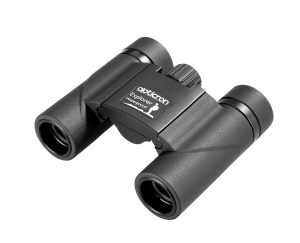 Opticron Explorer Compact Binoculars
Opticron Explorer Compact Binoculars
These lightweight and compact binoculars are easy to transport and store, with a weatherproof design that makes them ideal for use in the field whatever the weather.
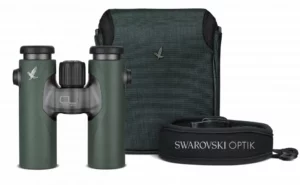 Swarovski CL Companion Binoculars with Wild Nature Case
Swarovski CL Companion Binoculars with Wild Nature Case
These high-end binoculars offer outstanding optical performance in a compact and lightweight body. Their wide field of view is perfect for surveying large landscapes or fast-moving animals.
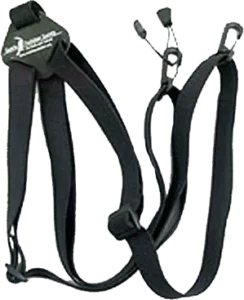 OP/TECH Bino/Cam Harness (Elastic)
OP/TECH Bino/Cam Harness (Elastic)
This self-adjusting harness reduces pressure on the neck for prolonged binocular use. The unique loop attachment system enables the harness to quickly snap in place and the binoculars to slide along the strap for use.
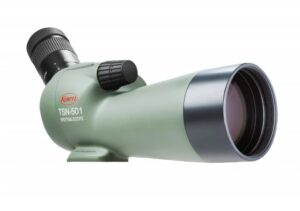 Kowa TSN-500 Series Compact Spotting Scope
Kowa TSN-500 Series Compact Spotting Scope
Durable, lightweight and with excellent image quality, this compact scope is ideal for beginners or experienced birders looking for a portable alternative.
This high-end spotting scope offers a luxury viewing experience, with dual focus engineering providing a smooth, easy operation. The unparalleled image quality assures that key identification features will be easy to pick out.







